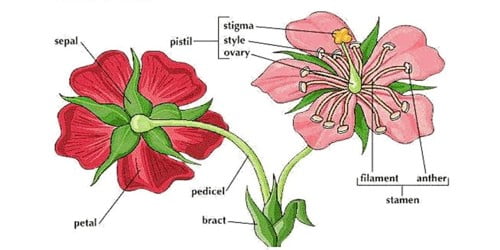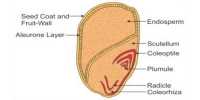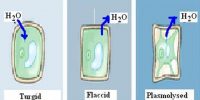The persistence of flower subtending bracts. Bracts are specialized plant structures that serve varied functions such as attracting pollinators and protecting inflorescences or flower structures. These are modified leaves, usually differing in size, shape, and color from other leaves. It is a small leaf-like structure on the peduncle which produces a flower in its axil. Like color and smell flowers have many variations in their structure too.
The floral buds are usually protected by the bracts. Flower with a bract is described as bracteate and the flower without a bract is known as ebracteate.
According to the Presence of Bracts:
- Bracteate Flower: Flowers, which have bract or bracts at its base is called bracteate flower, e.g. Crotalaria (Atoshi).
- Ebracteate Flower: Flowers, which have no bract at the base is called ebracteate flowers. In Brassica flower, there is no bract. A bract is a small leaf or leaf-like organ in the axils of which arise flowers.
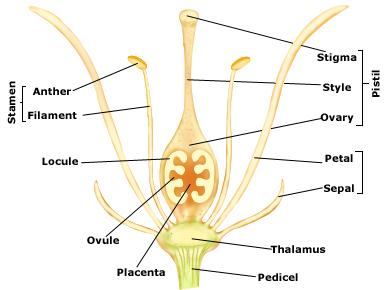
According to the position of Ovary:
- Hypogynous flower: A flower in which Calyx, Corolla and Androecium lie beneath the ovary is called hypogynous flower. Flowers of Datum, Hibiscus, Brassica, Solarium, and Chili, etc. are hypogynous flowers.
- Epigynous flower: A flower in which Calyx, Corolla, and Androecium are placed above the ovary is called epigynous flower. Flowers of lau (Lagenaria), Kumra (Cucurbita), Jhinga (Luffa), etc are examples of epigynous flowers.
- Perigynous flower: A flower in which Calyx, Corolla and Androecium are placed around the ovary is called perigynous flower. The thalamus of a perigynous flower is cup-shaped and the ovary is placed in the concave center of the thalamus, e.g. Rose. the ovary is placed in the concave center of the thalamus, e.g. Rose.
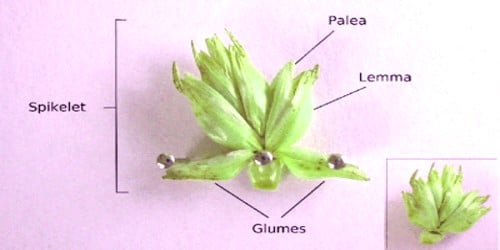
Bracts are modified into the following structures:
(a) Foliaceous bract: Bracts resembling ordinary green foliage leaves may be seen in the china-rose. Leaf-like, an expanded green bract is called the foliaceous bract, e.g., Pisum, Lathyrus, Adathoda, and Gynandropsis.
(b) Spathe: A largely modified bract which encloses spadix inflorescence totally or partially. These are large, thick, boat-shaped bracts called spathes covering the whole or a part of a spadix inflorescence. It may be leathery or woody, e.g., Alocasia, Cocoa, Musa, and Typhonium.
(c) Petaloid bract: Bracts sometimes become brightly colored simulating petals and perform the same function. A brightly colored petal-like bract is known as a petaloid bract, e.g., Bougainvillea, Poinsettia, and Euphorbia.
(d) Involucre: One or two whorls of green bracts that protect young inflorescence are called involucre, e.g., Coriandrum, Tagetes and Heracleum. Sometimes bases of these bracts fuse forming a cup-shaped structure.
(e) Epicalyx: Whorl of bracteoles present below the calyx or outside the calyx, e.g., Hibiscus rosa Sinensis and Malvaviscus arborous.
(f) Scaly bracts: Reduced, membranous, scale-like bracts seen in head inflorescence, e.g., florets in Tridax and Helianthus. Scaly bracts are also seen interspersed between the florets of catkin and cyathium inflorescences.
(g) Glumes: The bracts found on the rachilla of spikelet are called glumes. Each spikelet of the family Graminaceae bears as its base two scaly bracts called glumes of empty glumes. They may be sterile glumes or fertile glumes (lemma), e.g., Oryza sativa.
